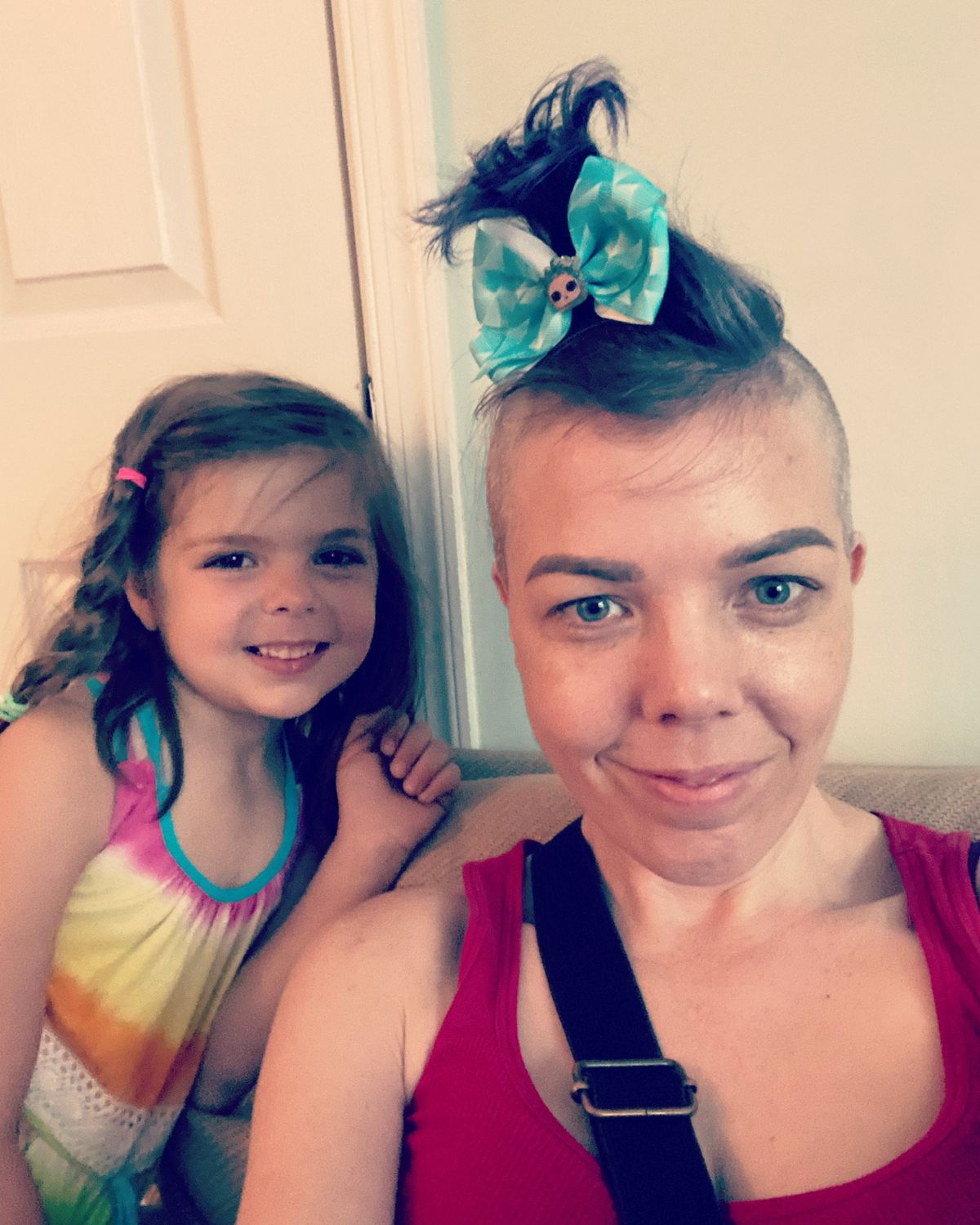‘Night and day’: Parkinson’s symptoms eased by non-surgical procedure, study shows

BALTIMORE – The other day, Melanie Carlson took her 5-year-old daughter shopping for a bathing suit.
Since they couldn’t find a suit in the first store, they stopped by a second. Then, Carlson drove them to a third store, acutely aware, the whole time, that this mundane afternoon would have been nearly impossible for her to experience less than a year earlier.
“All the little things,” she said, “I’m just very thankful for.”
Carlson, a 41-year-old who lives in Northeast Washington, D.C., has Parkinson’s disease – a neurodegenerative disorder that affects about 1 million Americans and causes shaking, stiffness and difficulty with balance and coordination.
Until recently, the medication Carlson took to manage the disorder caused dyskinesia, involuntary muscle jerks and spasms that made it hard for her to walk, let alone drive. Leaving her house was exhausting, both physically and emotionally, and she was terrified her symptoms would make her drop her young daughter.
But in June, Carlson became one of the first Parkinson’s patients to undergo a minimally-invasive procedure at the University of Maryland Medical Center that uses focused ultrasound to relieve symptoms of the disease and the side-effects of the medicine used to treat it.
The procedure, approved by the U.S. Food and Drug Administration in 2021 to treat advanced Parkinson’s on one side of the brain, was recently tested in a clinical trial led by researchers at the University of Maryland School of Medicine.
The results, according to a study published last week in the New England Journal of Medicine, were promising. Nearly 70% of patients who received the treatment showed improvements in symptoms, compared to 32% of patients in the control group, who received a sham procedure without focused ultrasound.
The study was carried out at the University of Maryland Medical Center and 15 other sites in North America, Asia and Europe. Those in the treatment group, which included 69 of the study’s total 94 participants, often experienced immediate relief from severe symptoms, such as tremors, rigidity in the arms and legs, and from dyskinesia.
Two-thirds of the patients who responded to the treatment continued to benefit from it a year later, according to the study. Participants will continue to be followed by researchers for five years to determine how long the treatment’s benefits last, and how it affects the progression of their disease.
Like other treatments for Parkinson’s, Exablate Neuro – the device used to conduct the focused ultrasound procedure – doesn’t cure the disease, said Dr. Howard Eisenberg, a neurosurgery professor at the University of Maryland School of Medicine and a neurosurgeon at the University of Maryland Medical Center.
Instead, he said, the procedure gives patients relief from symptoms that are making their lives difficult. And it does so without anesthesia, incisions or an in-patient hospital stay, differentiating it from deep brain stimulation – another treatment for Parkinson’s in which electrodes are surgically implanted in a patient’s brain.
During the focused ultrasound procedure, patients remain fully alert as they lie in a magnetic resonance imaging scanner. Doctors then direct ultrasonic energy through a targeted pinpoint in the skull to the globus pallidus, a structure deep inside the brain that helps control voluntary movement.
Patients talk to the doctors throughout the treatment, allowing the medical team to monitor the effects of the procedure and make adjustments as needed. And since the procedure takes place in an MRI scanner, doctors can watch the treatment progress in real-time on a temperature map, helping them precisely target the correct area and apply the right amount of heat to treat it.
Eisenberg, a corresponding author on the New England Journal of Medicine study, compared the procedure to using a magnifying glass to direct sunlight onto a leaf or piece of paper, burning a tiny hole into the object’s surface. But instead of burning a leaf, the ultrasound device knocks out a small cluster of neurons that are involved in a faulty circuit in the patient’s brain, Eisenberg explained. Doing so can help alleviate the symptoms a patient is experiencing.
It’s a “Back to the Future”-type approach, Eisenberg said, that takes a similar strategy used decades ago to treat Parkinson’s, and makes it much safer and less invasive.
Carlson first heard about the procedure during a “desperate night” last March, as she scoured online research articles about treatments for Parkinson’s.
“I want to do it tomorrow,” she remembered thinking.
When she got cleared for the procedure, she said, it felt like winning the lottery.
Though Eisenberg and his colleagues are currently conducting a clinical trial to see whether the Exablate Neuro device can be used on both sides of a patient’s brain – alleviating symptoms on both halves of their body – for now, the treatment is only available for one side of a patient’s brain.
Since most of Carlson’s symptoms were on the right side of her body, the left half of her brain was treated with the procedure. She noticed a difference immediately after the treatment.
“It’s like night and day,” she said. “I can walk. It’s just so mind-boggling.”
But Carlson, who didn’t participate in the recent clinical trial, had to pay for the procedure out-of-pocket, since it’s not yet covered by insurance.
The cost for the procedure at the University of Maryland Medical Center ranges from $28,000 to $30,000 for patients like Carlson who self-pay, according to a spokeswoman for the medical center. Carlson said her parents sold a car so she could get the treatment.
By sharing her story, Carlson hopes to provide solace to others with Parkinson’s who are struggling with the disorder’s symptoms, and further galvanize the medical community to expand access to the treatment.
“The science is there, the impact is there,” she said, “and I’m just hoping that this is accessible to everyone who needs it.”